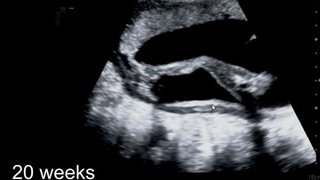5 ways to manage swollen legs and feet during pregnancy
September 14, 2021

Of all the body parts you expect to get bigger during pregnancy, feet might not be at the top of your list. But most pregnant women experience swelling in their lower legs and feet.
If your ankles appear puffy and your shoes don’t feel quite right, you’re not imagining things. The additional fluid and blood your body creates to support healthy fetal growth also slows down blood circulation. That can cause blood to accumulate in your lower extremities, causing swelling.
During pregnancy, you also produce more relaxin, a hormone that helps your tendons, ligaments, joints, and muscles – you guessed it – relax. While relaxin helps your pelvis open to give birth, it also loosens the tendons and ligaments in your feet.
The combination of extra weight and hormones during pregnancy can cause your feet not only to widen but also flatten and lengthen. Leg or ankle swelling likely will decrease a week or two after your baby is born, but your feet may never be the same again.
Studies have shown that pregnancy can cause a permanent decrease in your arch and increase in foot length – typically only after a woman’s first pregnancy.
While more research is needed to determine whether these structural changes can be prevented, there are a few things you can do throughout your pregnancy to reduce swelling and feel more comfortable.
Coping with swollen legs and feet during pregnancy
1. Wear compression socks
Wearing 15-20mmHG compression socks that end at your knee can help alleviate achiness. The socks gradually increase pressure in your legs and move some of the excess fluid back into your blood vessels and the rest of your body.
Avoid socks with a tight band at the top. The tightness might worsen swelling by blocking blood return. That can increase your risk of developing a blood clot – which is already five times higher during pregnancy. You don’t need to purchase medical-grade socks, but you can find a good pair of compression socks for $10-$20.
Compression socks also can prevent the formation of new varicose veins, which occur in 15% of pregnant women for the same reason that causes swelling. The risk doubles after your first pregnancy and is four times higher in women over 35. These veins start out as little bumps under your skin; the socks squeeze them just enough to prevent backward blood flow and bulging. Existing varicose veins aren’t likely to shrink, but compression socks can reduce the pain and discomfort they cause.
2. Rest efficiently
You can easily improve blood circulation during downtime and sleep:
- Elevate your legs above heart level while reading, watching TV, or doing other seated activities. The simple change in body position decreases pressure on your veins, which no longer have to work against gravity to send blood to your heart. Use cushions for comfort and elevate in 15- to 20-minute intervals a few times a day.
- Sleep on your left side. While you can safely sleep on either side during pregnancy, the left side is often recommended to avoid putting pressure on the inferior vena cava, a large vein that carries blood from your lower extremities to your heart.
3. Get your feet wet
Immersing your feet and ankles in cool water for 20 minutes a few times a week can minimize swelling, whether you use a pool, bathtub, or even a large bowl. Bonus: It’s also a great way to deal with the Texas heat if you’re pregnant during the summer.
Be sure the water temperature is moderate and not ice cold. Cooler temperatures cause the smaller blood vessels close to your skin to constrict, which reduces blood flow to and swelling within the affected area. Water that is too cold can have the opposite effect. Whether you stand and sway or sit and dangle your feet, water therapy is a great way to relieve stress and pain.
Related reading: Water immersion during labor

4. Invest in supportive shoes that fit.
Unsupportive and uncomfortable shoes can cause even more leg and foot pain, plus backaches. Even if your feet return to their pre-pregnancy size, you’ll feel more comfortable in shoes that fit your feet and support your additional body weight. The American College of Obstetricians and Gynecologists recommends wearing shoes that:
- Have a low heel but are not flat
- Provide good arch support, such as athletic shoes
Many patients prefer shoes that have mesh, which allow their feet to breathe, and can easily slip on and off to limit bending over while pregnant. More shoe brands are merging comfort and style, so even the most fashionable patients will have no problem finding footwear they feel good about wearing.
5. Visit a podiatrist or pedicurist.
Another reason to wear shoes that fit: Stress from tight shoes can cause ingrown toenails, and so can infrequent nail trimming. In the first two trimesters you probably won’t have any difficulty trimming your toenails. But once you reach the third trimester, it might get more challenging.
Try propping up your feet on a stool or ask your partner to help trim your toenails. Nail salon gift cards are a great item to add to your baby shower (or sprinkle!) registry, too.
Seeing a podiatrist is another option to prevent or treat painful foot conditions, such as ingrown toenail, bunions, or plantar warts.

Sign up for DFWChild’s Week-by-Week Guide to Pregnancy, presented in partnership with UT Southwestern Medical Center, to get timely information and updates.
When swelling becomes serious
While gradual swelling in your lower and upper extremities is normal, sudden or severe swelling in your face, hands, or feet might be a symptom of preeclampsia. This pregnancy complication involves very high blood pressure.
If you have preeclampsia, you may need to stay in the hospital until you give birth. Delivery is the only way to “treat” preeclampsia. Left untreated, the condition can cause seizures, kidney or liver damage, and in rare cases, death.
Related reading: Postpartum hypertension: When a new mom's blood pressure is too high
Talk with your doctor about foot and leg swelling, as well as any other pregnancy symptoms. The more we know about your current condition, the more we can help reduce your risk of future complications.
While we can’t fully prevent foot and leg swelling, we can recommend ways to reduce your risk, such as:
Discomfort during pregnancy is to be expected, but our goal is to partner with you to minimize it – as well as the risk of more serious conditions.
To discuss your pregnancy concerns or symptoms with an expert, call 214-645-8300 or request an appointment online.










